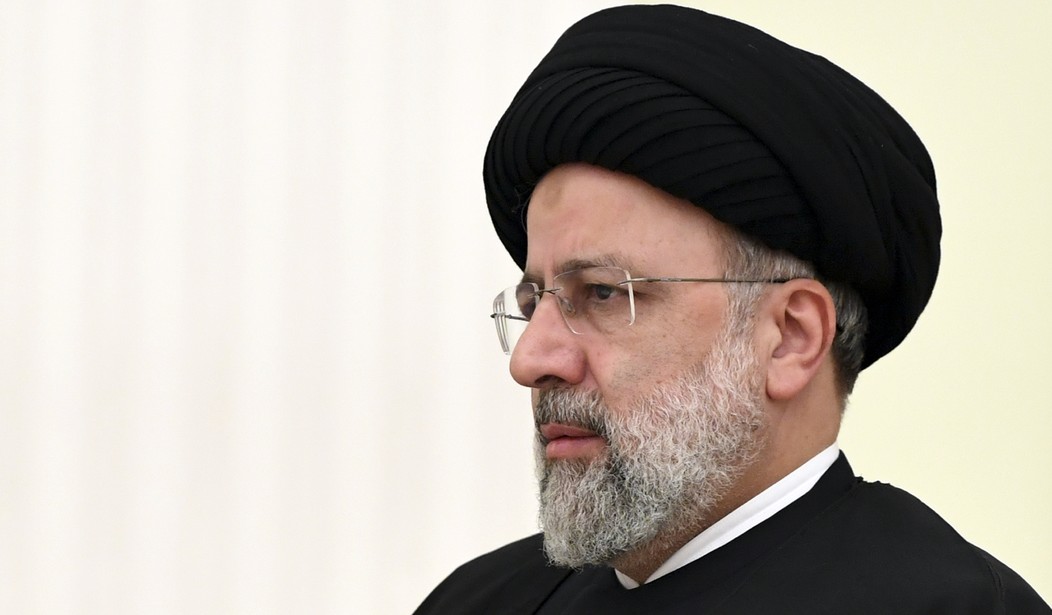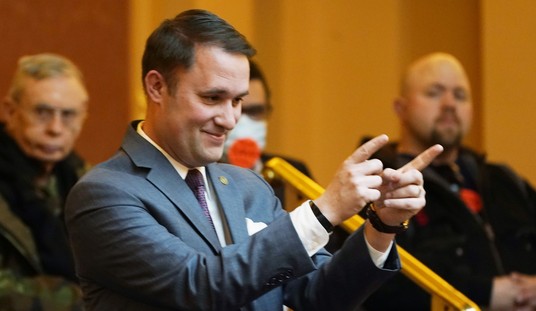Protesters in Iran can be shot dead. In November 2019 nationwide protests were met with deadly fire ordered by the mullahs. Snipers from the Islamic Revolutionary Guards Corps (IRGC), the theocratic regime’s Gestapo, killed 1,500 mostly young people, including 400 women. Thousands more were arrested, imprisoned, tortured and some even executed. To support the main democratic opposition movement, the People’s Mojahedin of Iran/Mojahedin-e Khalq (PMOI/MEK), is regarded in the mullahs’ constitution as “Moharebeh,” or waging war against God, a crime punishable by death. In the summer of 1988, they massacred over 30,000 political prisoners who were known to support the PMOI/MEK. Ebrahim Raisi, Iran’s president, has been dubbed ‘The Butcher of Tehran’ after he publicly admitted and even boasted about his involvement in the 1988 massacre. Raisi is on the record saying: "As long as the MEK leadership is alive, anyone who supports the group in any way deserves to be executed."
Against this background of oppression, tyranny, persecution and torment, it is mind-blowing to see the increasing operations of resistance units of the PMOI/MEK inside the theocratic regime. Graffiti supporting the opposition group’s charismatic leader, Maryam Rajavi, regularly appears on walls, buildings and motorway overpasses. Posters and images of Iran’s Supreme Leader Ayatollah Ali Khamenei and Ebrahim Raisi are defaced and often set on fire. State buildings belonging to the IRGC or their thuggish paramilitary Basiji are vandalized and trashed. A newly erected statue to commemorate the terrorist Godfather Qassem Soleimani, eliminated in a drone strike in January 2020 on the orders of President Trump, was torched, hours after it was unveiled in southwestern Iran, in January this year. To be caught engaging in such activities would lead to certain torture and execution, but the courage and resilience of the resistance units is continuing to grow. Their presence is now recognized by the mullahs in every town and city in Iran, creating a sense of fear and trepidation in the clerical regime.
Now, the modus operandi of the resistance has taken on a new and sophisticated role. Cyber attacks are rapidly becoming a commonplace feature of life in Iran. Last week, Iranian dissidents hacked thousands of surveillance cameras around Tehran and dozens of the regime’s websites.
CCTVs were even knocked out at various tightly controlled sites, such as the tomb of the fanatical founder of the Islamic Republic - Ayatollah Khomeini, in Behesht-e Zahra cemetery, on the eve of the anniversary of his death, causing huge consternation for the mullahs.The cyber attacks were timed to coincide with mass protests involving pensioners facing poverty, hunger and deprivation and ordinary people who have taken to the streets in the thousands to complain about soaring food prices.
Recommended
Dismayed at the way the regime continues to spend billions funding proxy wars and terrorist groups throughout the Middle East, squandering billions more on their clandestine efforts to build a nuclear bomb, while corruptly lining the pockets of the mullahs and the senior IRGC commanders, the Iranian people have had enough. Revolution is in the air and the messages beamed across state television and radio channels, skillfully hacked by the PMOI/MEK, condemns Khamenei, Raisi and their henchmen and calls for their overthrow. The severing of more than 5,000 surveillance cameras in Tehran alone last week was a major coup for the resistance units. Four days after the cyber-hack, municipality officials were still issuing statements banning their employees from turning on their computers, after messages stating: “Damned be Khomeini; death to Khamenei and Raisi; hail to Rajavi,” appeared on more than half a million phones and computers.
On January 27 this year, footage prepared by the resistance suddenly appeared on TV screens on state networks across Iran, broadcasting images of the POMOI/MEK leaders - Massoud and Maryam Rajavi and deprecating Khamenei and Raisi. More than 400 TV and radio servers were knocked out and permanently destroyed by the sophisticated cyber-attack. In blind panic, security forces associated with the regime’s broadcasting stations prevented people from entering or leaving the state networks’ buildings. All Islamic Republic of Iran Broadcasting (IRIB) employees and staff were quarantined for questioning.
The PMOI/MEK resistance units have shown that they can now penetrate the heart of the regime’s oppressive surveillance and security apparatus and turn it on its head, giving great encouragement and boosting the morale of the beleaguered Iranian population. The response from Supreme Leader Khamenei underlined the regime’s sense of panic. He said on state media: “Today the enemy has high hopes to strike major blows to the regime using popular protests. They hope to use the internet or through psychological warfare and other deviltries to influence people to revolt against the Islamic Republic.” One of Khamenei’s closest confidants - Nasser Rafi – was quoted by the official IRNA News Agency as saying: “I fear the MEK. The damages the MEK caused in our system has been more than the infidels [the regime’s western adversaries].”
In retaliation, the mullahs’ regime has repeatedly tried to counter-hack the PMOI/MEK website, but their efforts have been repulsed. Their failed cyber-attacks have clearly demonstrated their blind panic and fear that news of the on-going activities of the resistance units will serve to mobilize the restless population into open revolt, overthrowing the regime and restoring peace, freedom, democracy and a secular social system in Iran. The mullahs would do well to remember the old adage: “You can jail a revolutionary, but you cannot jail the revolution.”
























Join the conversation as a VIP Member